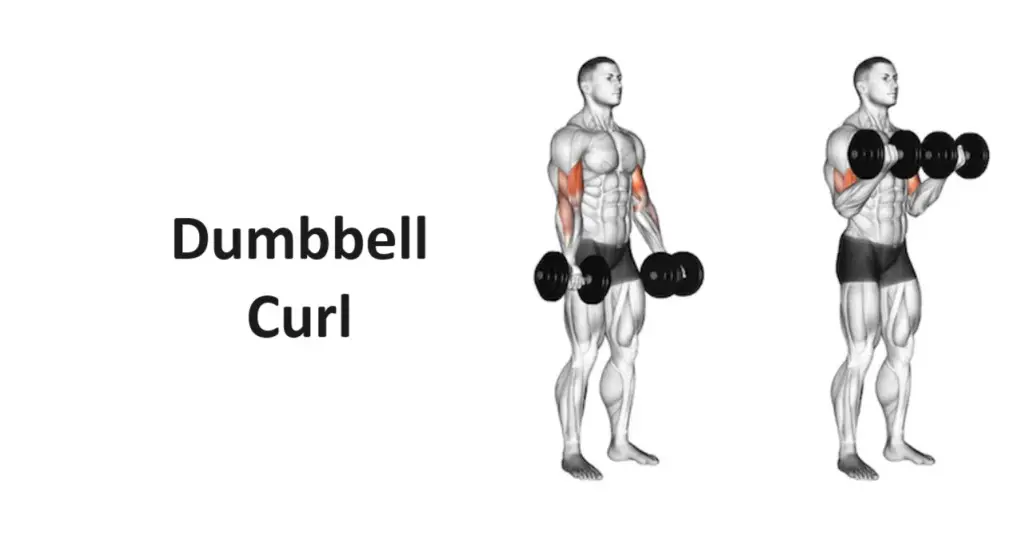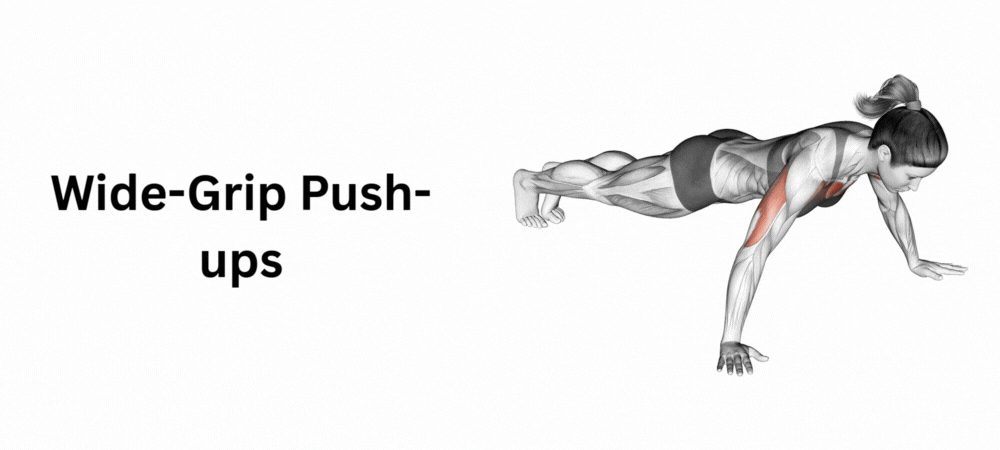Table of Contents
Introduction
When it comes to building impressive biceps, the dumbbell curl stands as the gold standard of arm exercises. This classic movement has been a cornerstone of strength training for decades, and for good reason. Unlike many complex exercises, the dumbbell curl is accessible to beginners while remaining challenging enough for advanced lifters. The beauty of this exercise lies in its simplicity and effectiveness, requiring only a pair of dumbbells and proper technique to deliver remarkable results for bicep development.
Benefits of Dumbbell Curl
1. Unilateral Training Advantages
Using dumbbells instead of a barbell allows for unilateral training, meaning each arm works independently. This approach helps identify and correct muscle imbalances between your dominant and non-dominant arm. Many people have strength discrepancies between their arms, and dumbbell curls ensure that each side develops equally, leading to better overall symmetry and reduced injury risk.
2. Enhanced Range of Motion
Dumbbells provide greater freedom of movement compared to barbells or machines. This increased range of motion allows for a fuller stretch of the biceps at the bottom of the movement and a more complete contraction at the top. The natural arc of motion also feels more comfortable for most people’s shoulder and elbow joints.
3. Improved Muscle Activation
The isolation nature of dumbbell curls allows for focused targeting of the biceps brachii. This concentrated effort leads to better muscle activation and development compared to compound movements where the biceps work as secondary muscles. The direct stimulation promotes both strength gains and muscle hypertrophy.
4. Versatility and Convenience
Dumbbell curls can be performed virtually anywhere with minimal equipment. Whether you’re at home, in a commercial gym, or traveling, a pair of dumbbells is all you need for an effective bicep workout. This convenience makes it easy to maintain consistency in your training routine.
5. Progressive Overload Potential
Dumbbells offer excellent opportunities for progressive overload through weight increases, tempo changes, and various grip positions. This adaptability ensures continued progress and prevents training plateaus, keeping your biceps challenged and growing over time.
How to Perform Dumbbell Curl
Equipment Needed
- A pair of dumbbells with appropriate weight
- Adequate space to stand and move your arms freely
- Optional: A bench for seated variations
Step-by-Step Instructions
Setup
Prepare Your Equipment:
- Select dumbbells that allow you to complete 8-12 repetitions with proper form
- Ensure you have enough space around you to perform the movement safely
Position Yourself:
- Stand upright with your feet shoulder-width apart
- Hold one dumbbell in each hand using a supinated grip (palms facing forward)
- Let your arms hang naturally at your sides with dumbbells resting against your thighs
Stance and Posture:
- Keep your knees slightly bent and maintain a natural arch in your lower back
- Engage your core muscles to create a stable foundation
- Keep your shoulders down and back, avoiding any hunching
- Ensure your elbows are close to your torso throughout the movement
Execution
Begin the Curl:
- Slowly curl the dumbbells upward by flexing your biceps
- Keep your upper arms stationary and perpendicular to the floor
- Focus on using only your bicep muscles to lift the weight, avoiding any swinging motion
Squeeze at the Top:
- Continue curling until your forearms are fully contracted
- Position the dumbbells near your shoulders at the peak of the movement
- Pause briefly and squeeze your biceps to maximize muscle activation
Lower with Control:
- Slowly lower the dumbbells back to the starting position
- Maintain control throughout the entire range of motion
- The eccentric (lowering) portion is crucial for muscle development
Maintain Proper Breathing:
- Exhale as you curl the weights up
- Inhale as you lower them down
- Proper breathing helps maintain core stability throughout the exercise
Repetitions and Sets
- For Strength: Perform 3-4 sets of 4-6 reps per arm with heavier weights
- For Muscle Growth (Hypertrophy): Perform 3-4 sets of 8-12 reps with moderate weight
- For Endurance: Perform 3-4 sets of 15-20 reps with lighter weights
Additional Tips for Success
Maintain Proper Form:
- Keep your wrists straight and aligned with your forearms
- Avoid swinging your body or using momentum
- Focus on a smooth, controlled tempo both up and down
Control the Tempo:
- Take 2-3 seconds to lift the weight
- Pause for 1 second at the top
- Take 2-3 seconds to lower the weight
Progressive Overload:
- Gradually increase weight only after mastering proper form
- Add 2.5-5 pounds when you can complete all sets and reps perfectly
- Focus on quality over quantity in every repetition
Video Demonstration
Common Mistakes to Avoid
1. Using Too Much Weight
Selecting weights that are too heavy leads to compromised form and reduced effectiveness. When the weight is excessive, lifters often resort to swinging their body or performing partial repetitions. Start with manageable weight and focus on perfect form.
2. Swinging and Using Momentum
Many people rock their body back and forth to help lift the weight. This momentum reduces bicep activation and can lead to injury. Keep your torso stable and use only your bicep muscles to move the weight.
3. Improper Elbow Position
Allowing elbows to drift forward or flare out reduces bicep activation and stresses the shoulder joint. Keep your elbows tucked close to your torso and directly under your shoulders throughout the movement.
4. Neglecting the Negative Phase
Many lifters focus only on lifting and let gravity control the lowering phase. The eccentric portion is crucial for muscle development and should be performed with control and intention.
5. Incomplete Range of Motion
Performing partial repetitions limits muscle development and flexibility. Use the full range of motion by starting with arms fully extended and curling until biceps are fully contracted.
Muscles Worked in Dumbbell Curl
Primary Muscle Group
Biceps Brachii
- Both the long head and short head of the biceps are heavily engaged during the movement
- The biceps brachii is responsible for elbow flexion and forearm supination
Secondary Muscles
Brachialis: Located underneath the biceps, assists in elbow flexion and contributes to overall arm thickness Brachioradialis: The largest forearm muscle that assists in elbow flexion Anterior Deltoids: Provide stability and support during the movement Core Muscles: Act as stabilizers to maintain proper posture Forearm Flexors: Help maintain grip strength and wrist stability
Variations of Dumbbell Curl
1. Alternating Dumbbell Curls
Instead of curling both arms simultaneously, alternate between left and right arms. This variation allows for focused attention on each arm and can help identify strength imbalances.
2. Hammer Curls
Hold dumbbells with a neutral grip (palms facing each other). This variation emphasizes the brachialis and brachioradialis muscles while still working the biceps, contributing to overall arm thickness.
3. Seated Dumbbell Curls
Perform the exercise while seated on a bench with back support. This eliminates the ability to use body momentum and forces stricter form, making it ideal for isolation work.
4. Incline Dumbbell Curls
Lie back on an incline bench set at 45-60 degrees. This position stretches the biceps at the bottom of the movement and targets the long head of the biceps more effectively.
5. Concentration Curls
Sit on a bench and brace your elbow against the inside of your thigh. This variation provides maximum isolation and helps improve the mind-muscle connection with the biceps.
Incorporating Dumbbell Curl into Your Routine
Sample Biceps Workout
- Barbell Curl: 3×8-10
- Dumbbell Curl: 3×10-12
- Hammer Curl: 3×12-15
- Concentration Curl: 3×10 per arm
Training Frequency
Include biceps-focused exercises 1-2 times per week for optimal development. Allow at least 48 hours of recovery between bicep training sessions, as the muscles also get worked during pulling exercises like rows and pull-ups.
Safety Considerations
1. Choose the Right Weight
Start with lighter weights to master proper form before progressing to heavier loads. Form should never be compromised for the sake of lifting more weight.
2. Warm Up Properly
Perform 5-10 minutes of light cardio followed by dynamic stretches and arm circles. Complete a few light sets before moving to your working weight.
3. Listen to Your Body
Pay attention to any pain or discomfort during the exercise. Sharp pain, particularly in the elbow or shoulder, should not be ignored. Muscle fatigue is normal, but joint pain is a warning sign.
4. Gradual Progression
Avoid increasing weight too quickly. Progress gradually to allow your muscles, tendons, and joints to adapt to the increased demands safely.
FAQs
1. Can beginners perform dumbbell curls?
Yes, dumbbell curls are excellent for beginners when performed with appropriate weight and proper form. Start with lighter weights to learn the movement pattern.
2. How much weight should I use?
Start with 10-20% of your body weight per dumbbell and adjust based on your strength level. The weight should allow you to complete all repetitions with perfect form.
3. Are dumbbell curls better than barbell curls?
Both exercises have benefits. Dumbbell curls allow for unilateral training and greater freedom of movement, while barbell curls enable heavier loading and different muscle activation patterns.
4. Can I perform dumbbell curls every day?
It’s not recommended to train biceps daily. Allow 48-72 hours of recovery between bicep training sessions for optimal muscle growth and recovery.
5. How long does it take to see results?
With consistent training and proper nutrition, beginners may notice strength improvements within 2-4 weeks and visible muscle changes within 6-8 weeks.
Conclusion
The dumbbell curl remains one of the most effective and accessible exercises for building strong, defined biceps. Its simplicity makes it perfect for beginners, while its versatility keeps it challenging for advanced lifters. By focusing on proper form, progressive overload, and consistent training, you’ll see significant improvements in both arm strength and muscle definition.
Remember that patience and consistency are key to success. Start with appropriate weights, master the technique, and gradually progress over time. Whether your goal is building impressive biceps for aesthetic purposes or improving functional strength for daily activities, the dumbbell curl should be a cornerstone of your arm training routine.
Incorporate the variations and programming suggestions provided to keep your workouts fresh and challenging. Most importantly, enjoy the process of getting stronger and building the physique you desire. With dedication and proper technique, the dumbbell curl will help you achieve the arm development you’ve been working toward.








